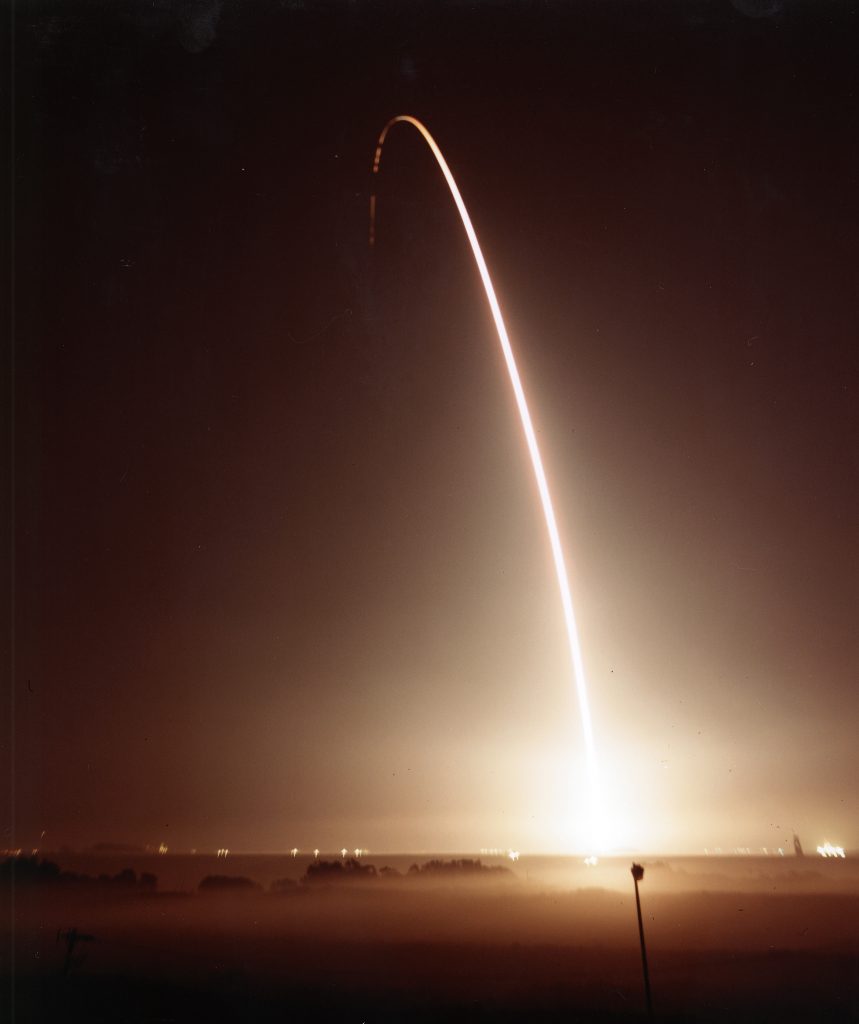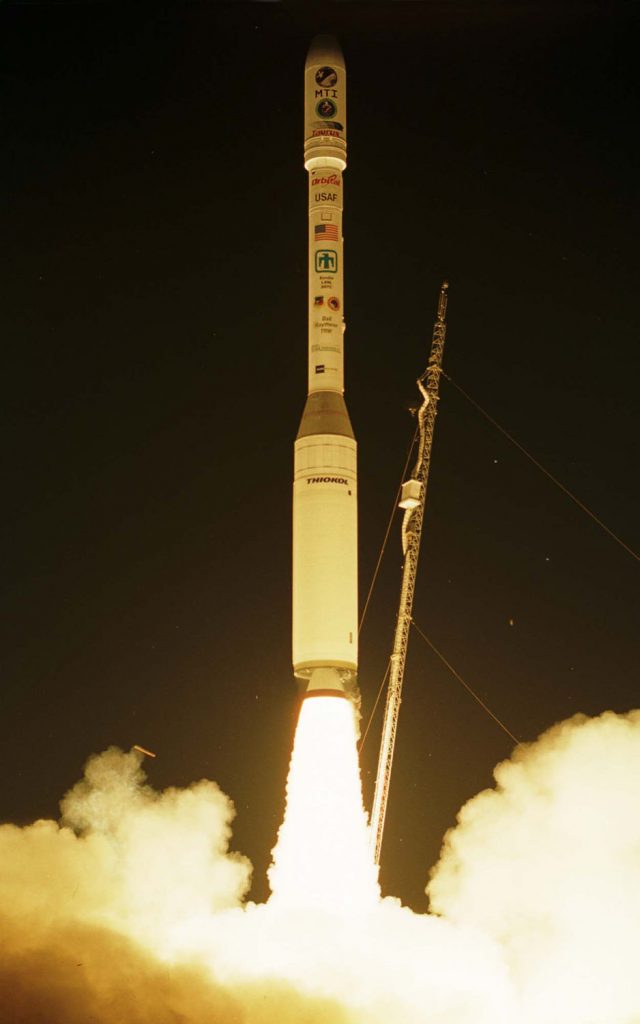
Download 300dpi JPEG image, ‘MTI-Launch.jpg’, 1.1Mb (Media are welcome to download/publish this image with related news stories.)
ALBUQUERQUE, N.M. — A Department of Energy research satellite designed and built at Sandia National Laboratories was successfully placed into orbit early Sunday morning, March 12, by a Taurus rocket launched from Vandenberg Air Force Base, Calif.
The Air Force Space and Missile Center launched the satellite at 1:29 a.m. PST, March 12, using an Orbital Sciences Corp. Taurus rocket. At about 1:41 a.m. PST, the satellite was alone in space as the final booster of the four-stage rocket separated from the satellite, leaving the MTI on its planned polar orbit.
This morning, March 13, operators in Sandia’s ground control station report that the satellite appears to be in good working order based on its four passes over Albuquerque so far. Preliminary indications are that all of the satellite’s instruments and functions are working and responding properly. Sandia officials caution, however, that it will take at least a month to check out the satellite completely.

Download 300dpi JPEG image, ‘taurus.jpg’, 108K (Media are welcome to download/publish this image with related news stories.)
The Multispectral Thermal Imager (MTI) satellite carries a sophisticated telescope that collects day and night ground images in 15 spectral bands. The unique camera, designed and built by a government and industry team led by Sandia and calibrated at Los Alamos National Laboratory, gives the satellite the ability to photograph light and heat patterns on Earth that are not visible to the human eye.
During its three-year mission, the MTI satellite will pass over the Albuquerque control station twice a day, each time transmitting imaging data to Sandia controllers and receiving instructions for the following 12 hours.
The Department of Energy has established an MTI Users Group, comprising more than 100 researchers from 50 national defense and civilian agencies, that will conduct experiments using MTI images of instrumented ground sites.
More information about MTI and downloadable color images are available at https://newsreleases.sandia.gov/doe-research-satellite-to-be-launched-from-vandenberg-afb-early-sunday-march-12/, and at Orbital Sciences Corporation’s web site at http://www.orbital.com.